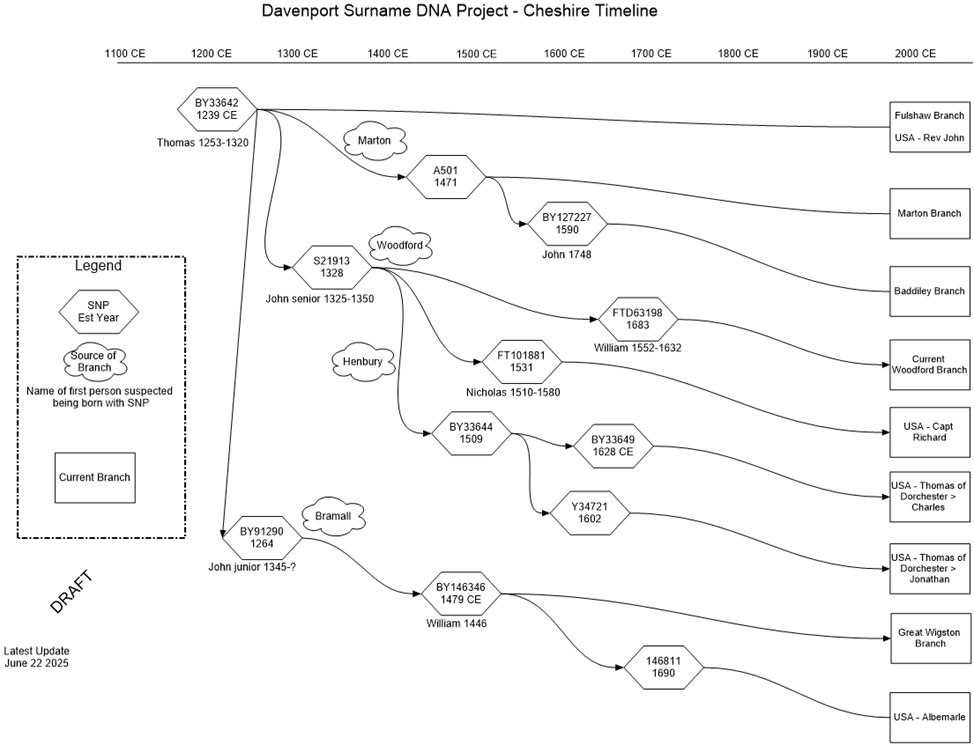In recent years, advances in technology has allowed our testing company to develop a test called the Big-Y, offering more detailed insights than ever before. The Big-Y test pinpoints the most detailed Y-DNA haplogroup available, making it easier to uncover the roots of your father’s lineage with greater precision.
Briefly, the Big-Y uses a different type of Y-DNA than we used for testing in the past. We use SNP’s instead of STR’s. For our purposes, we will leave it at that. SNP’s are mutations on the Y-Chromosome. These mutations are rare and harmless. However, once one occurs, it is passed on down to all future generations of male Davenports. So, over a period of say a thousand years, one ‘straight” line of a Davenport branch might see maybe 2 to 5 mutations. In other words, they accumulate. It is these mutations and the sequence that they occur that allows to generate our “group time tree” below.
The chart below illustrates our current progress. Please note, it is a draft and still a long way from being final. The hexagon boxes represent known mutations at specific Y-DNA SNP locations. The top number in each box indicates the name of the SNP, while the number below reflects the estimated year when the mutation occurred. For example, in the top left corner, the SNP BY33642 is shown to have arisen in a male born around the year 1239 CE.
From this SNP, four descending paths or branches extend, representing at least four different lines of descendants. Moving along the third path, you’ll see the SNP S21913, which emerged approximately in the year 1328. All Davenports suspected to descend from the Woodford branch carry this S21913 mutation. As more Davenports are tested and more mutations are identified, we will be able to focus on more recent and current Davenport branches.

Note: The above chart is in the very early stages of development. A draft. As more results come in, more SNP’s will be added, the SNP may vary slightly, and the individual list as the source of the SNP may change.
What if your Y-DNA doesn’t match the main Cheshire Davenport line? Most English Davenports do. Most American Davenports don’t! However, that doesn’t necessarily mean there is no connection. There are four American lines that match the parent Cheshire line, and there are four other American Davenport lines whose Y-DNA differs from the main line, yet they still match an English participant who, on paper, is linked to the broader family.
This variation could be the result of a “paternal event”—an occurrence where, at some point in the lineage, the biological father was not the one traditionally recorded. Such events might include undocumented adoptions, raising an unrelated child as a Davenport, affairs, or other unforeseen circumstances. While these situations can be complex, they are a natural part of family history. If the event occurred several generations ago, you may still find matches as our database continues to grow.